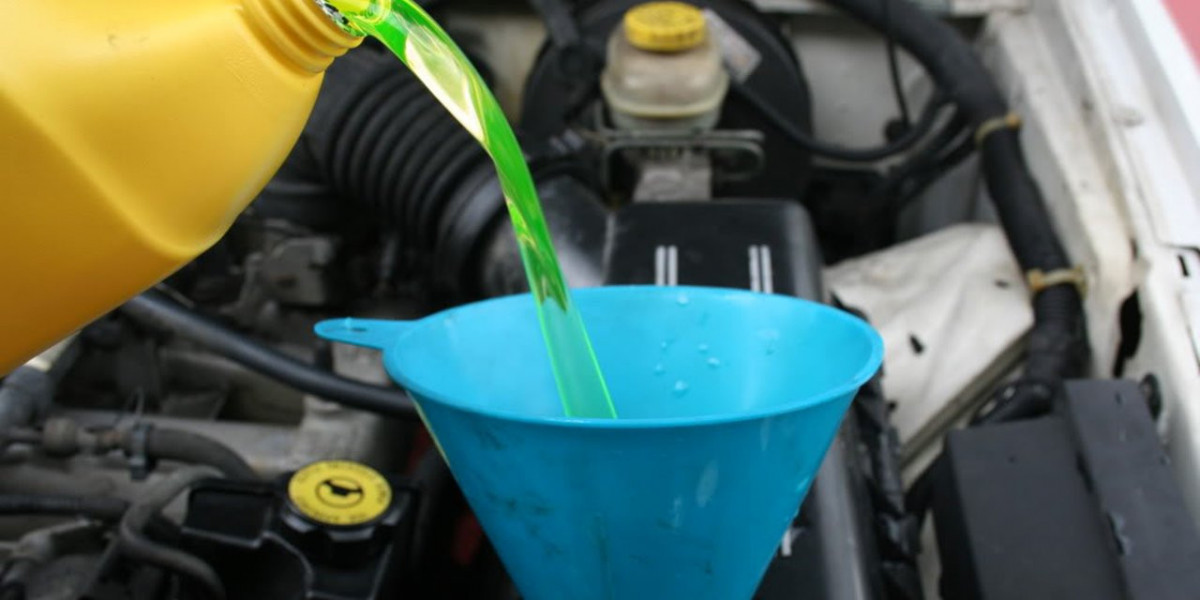Introduction
The electric vehicle (EV) revolution has sparked a wave of innovation across the automotive supply chain, and the electric vehicle coolants market is no exception. With rising demands for efficiency, safety, and sustainability, thermal management systems are evolving rapidly—driven by cutting-edge technological advancements. This article explores how innovation is reshaping the coolant landscape and enabling next-generation EV performance.
Why Technological Advancements Matter in EV Coolants
Unlike internal combustion engine (ICE) vehicles, EVs generate heat from batteries, inverters, motors, and charging systems—each requiring specialized cooling. The new generation of EV coolants must offer:
Superior thermal conductivity
Electrical insulation for high-voltage systems
Longer service life
Compatibility with lightweight and compact EV components
Technological advancements are critical in meeting these evolving requirements while ensuring regulatory compliance and sustainability.
Key Technological Innovations Driving Market Transformation
1. Immersion Cooling Technology
One of the most significant breakthroughs in EV thermal management is immersion cooling.
Uses non-conductive dielectric fluids to submerge battery cells directly
Offers faster and more efficient heat dissipation compared to traditional cooling loops
Supports ultra-fast charging and enhances battery safety
Example: Companies like 3M and Engineered Fluids are developing advanced immersion coolants for high-performance EVs and energy storage systems.
2. Development of Dielectric Coolants
Modern EVs operate at higher voltages (400V to 800V+), requiring coolants that prevent electrical conduction.
Dielectric fluids provide electrical insulation while managing heat
Used in batteries, inverters, and power electronics
Enhances safety in compact EV architectures
Example: Lubrizol and BASF are innovating with dielectric coolant technologies designed for integrated powertrains and battery packs.
3. Nano-Enhanced Thermal Fluids
Nanotechnology is opening new doors for coolant performance.
Nanofluids contain engineered nanoparticles (e.g., Al2O3, CuO) to boost heat transfer
Improves cooling efficiency and reduces fluid volume requirements
Still in early-stage deployment but shows promising results in lab environments
This technology has potential to redefine cooling efficiency for next-gen EVs, particularly in high-load or high-speed applications.
4. Smart Coolants with Condition Monitoring
Some manufacturers are introducing coolants embedded with sensor technology and smart additives.
Real-time tracking of coolant quality, pH, and contamination
Enables predictive maintenance and alerts for coolant replacement
Improves reliability, especially for fleet and commercial EVs
These smart systems align with the growing trend of connected vehicle platforms and digital diagnostics.
5. Eco-Friendly Formulations
Technology is also transforming coolant chemistry to meet sustainability goals.
Development of bio-based and biodegradable coolants
Fluids with low toxicity and reduced environmental impact
Formulations that support extended drain intervals, reducing waste and cost
Example: Companies like TotalEnergies and Arteco are launching green coolants tailored for electric and hybrid vehicles.
Impact on Market Growth and Competitive Strategy
These technological advancements are not only enhancing coolant performance but also influencing market dynamics:
OEMs are seeking exclusive coolant partnerships based on advanced formulations
Aftermarket players are adopting smart and universal coolants to serve broader EV platforms
Startups and niche players are entering the market with proprietary technologies
Coolant innovation is now a competitive differentiator in a market expected to exceed $3 billion globally by 2030.
Challenges in Technological Adoption
Despite the progress, some hurdles remain:
High R&D and production costs for advanced coolants
Compatibility with diverse EV systems and global regulations
Limited aftermarket readiness for newer technologies like immersion cooling
However, as the EV market matures, economies of scale and standardization will improve adoption rates.
Conclusion
The electric vehicle coolants market is undergoing a profound transformation through technological innovation. From dielectric fluids to nanotechnology and smart diagnostics, next-gen coolant solutions are critical for unlocking the full potential of electric mobility. As the EV landscape grows more sophisticated, companies investing in advanced coolant technologies are positioning themselves at the forefront of a multi-billion-dollar opportunity.









